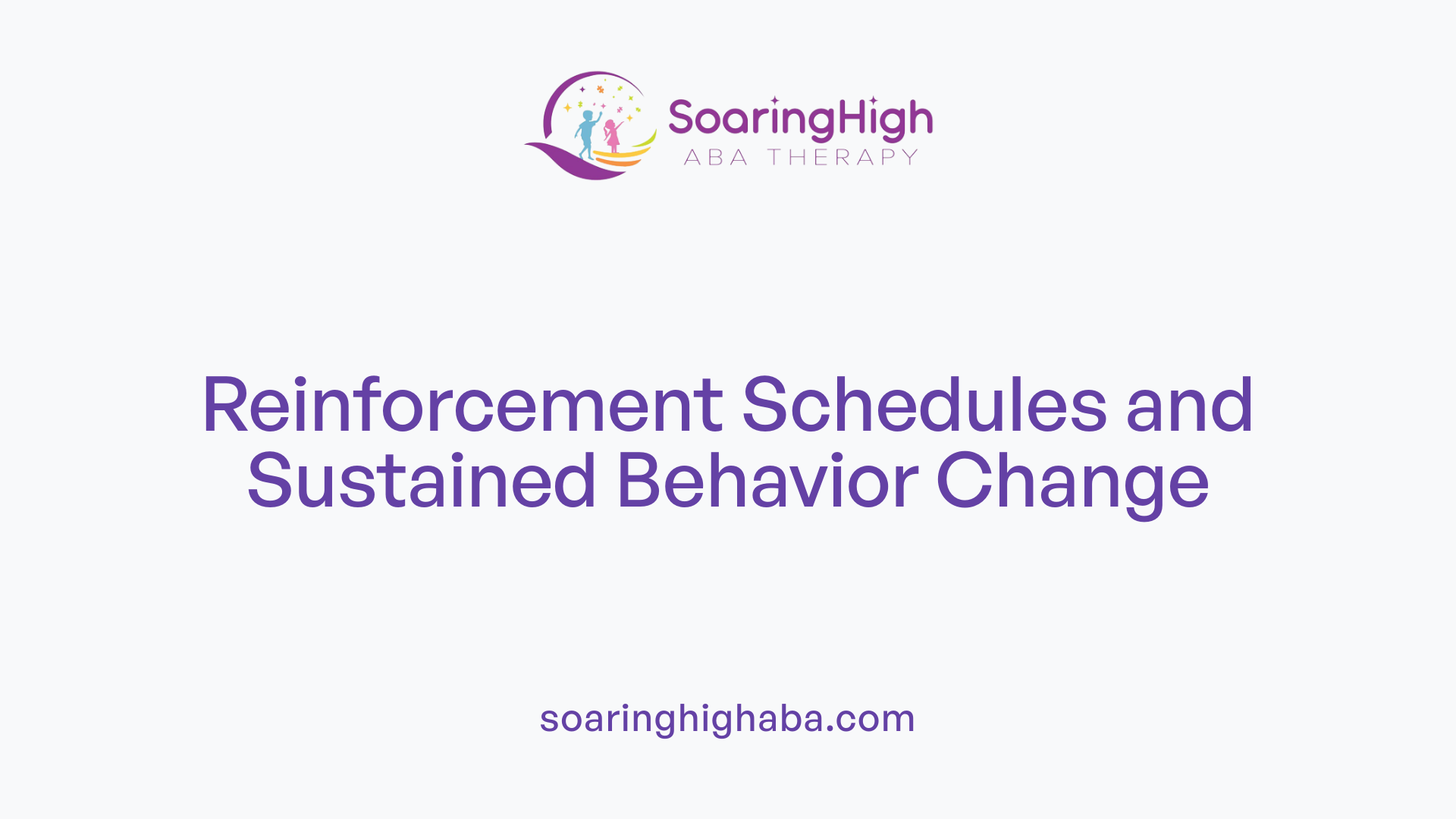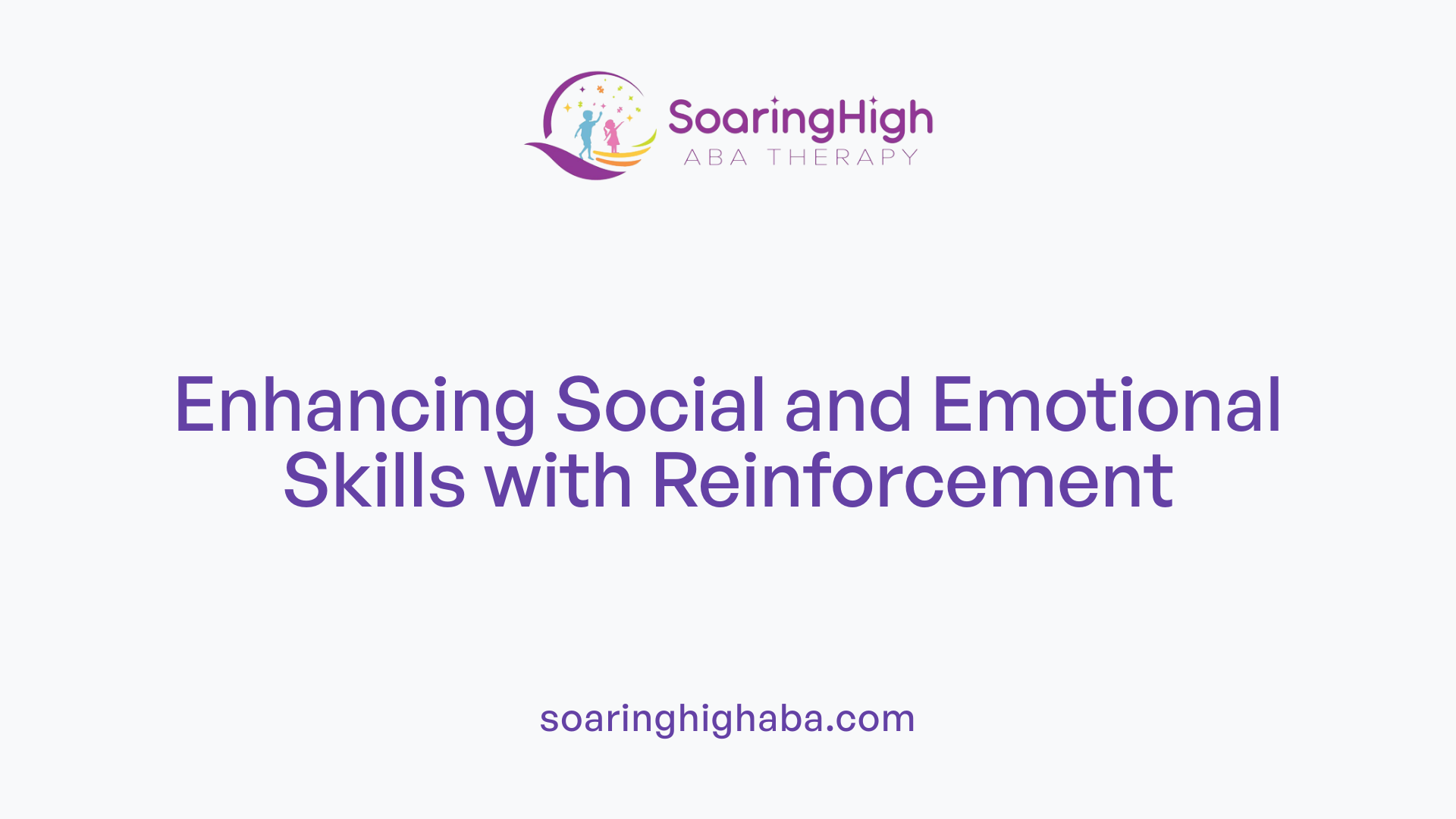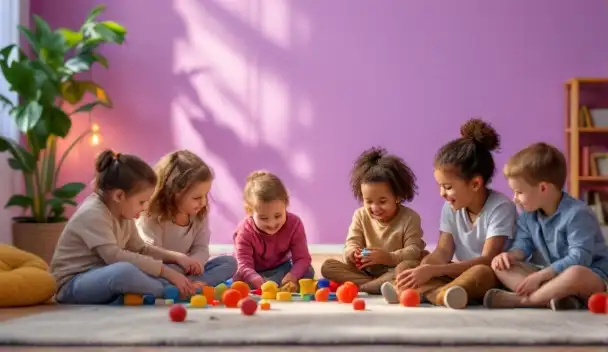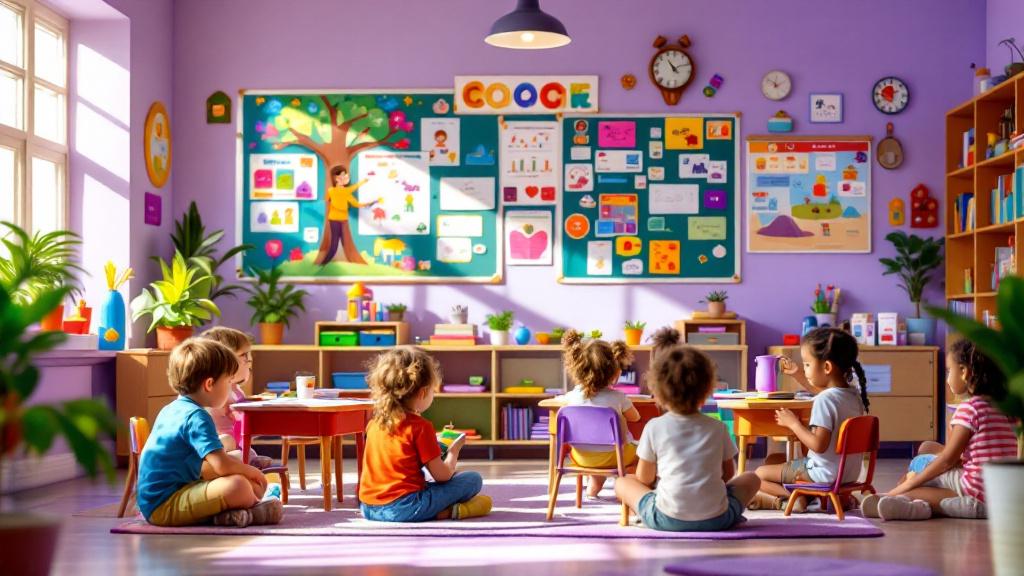Understanding the Foundations of Positive Reinforcement
Positive reinforcement is a core principle derived from behavioral psychology, notably associated with the work of B. F. Skinner and operant conditioning theory. It involves the application of desirable stimuli following specific behaviors to increase their likelihood of recurrence. Recognizing how this mechanism operates within various settings empowers caregivers, educators, and therapists to foster positive behavioral outcomes effectively.
What is Positive Reinforcement and How Does It Work?

What is positive reinforcement and how does it work?
Positive reinforcement is a fundamental concept in behavioral psychology rooted in the work of B. F. Skinner and operant conditioning. It involves adding a pleasant stimulus immediately following a desired behavior to encourage its recurrence. For example, giving praise to a student after they complete their homework or offering a treat to a dog after it sits on command.
This technique works by strengthening the connection between the behavior and the reward, making it more likely that the behavior will happen again. The reward acts as a motivating factor and helps individuals understand which actions are desirable. Over time, consistent use of positive reinforcement helps internalize positive habits.
Types of reinforcers: natural, social, tangible, and token
Reinforcers come in various forms, and choosing the right one depends on the individual and context. Common categories include:
| Type of Reinforcer | Examples | Explanation |
|---|---|---|
| Natural Reinforcers | Good grades, naturally earned | Outcomes that naturally follow a behavior, like feeling proud after completing a project |
| Social Reinforcers | Praise, smiles, verbal acknowledgment | Positive social interactions that encourage the behavior |
| Tangible Reinforcers | Stickers, toys, snacks | Physical objects given to reward behavior |
| Token Reinforcers | Stars on a chart, points | Items that can be exchanged later for broader rewards |
Implementation essentials: immediacy, meaningfulness, and consistency
For positive reinforcement to be effective, it must be delivered immediately after the desired behavior. Delay can weaken its impact. The reward also needs to be meaningful and motivating to the individual, which requires understanding their preferences.
Consistency is vital. Reinforcing behaviors regularly helps establish strong associations between actions and rewards. In environments like classrooms, workplaces, and homes, establishing clear routines and predictable reinforcement schedules fosters stable and lasting behavioral changes.
By focusing on these principles, positive reinforcement becomes a powerful tool for promoting desirable behaviors, building confidence, and creating supportive environments that motivate continuous growth and improvement.
The Mechanisms Behind Positive Reinforcement in Behavioral Change

How can positive reinforcement be used to facilitate behavioral change?
Positive reinforcement plays a vital role in altering behavior by rewarding specific actions to encourage their recurrence. When a desirable behavior occurs, a rewarding stimulus—such as praise, tokens, privileges, or tangible rewards—is immediately provided. This immediate acknowledgment strengthens the connection between the behavior and the positive outcome, making it more likely that the individual will repeat the behavior.
Consistently applying positive reinforcement helps individuals develop new habits and solidify existing ones. For example, praising a child for sharing or giving a worker a bonus for meeting a target can motivate continued effort and improvement. Besides fostering behavior change, this method boosts self-esteem and confidence, making the new behaviors more sustainable.
Creating a supportive environment where positive behaviors are recognized and rewarded encourages ongoing compliance and effort. Over time, individuals internalize these positive actions, leading to long-lasting behavioral improvements.
How do reinforcement schedules influence behavior?
Reinforcement schedules determine how and when rewards are given, significantly affecting their effectiveness in behavior change. These schedules include continuous reinforcement, fixed ratio, variable ratio, fixed interval, and variable interval.
- Continuous reinforcement involves rewarding every instance of the desired behavior, ideal during initial learning phases.
- Fixed ratio (FR) provides rewards after a set number of responses, effective for maintaining consistent performance.
- Variable ratio (VR) rewards after an unpredictable number of responses, which tends to produce high response rates and resilience to extinction.
- Fixed interval (FI) offers reinforcement after a fixed time period, encouraging consistent effort as the time approaches.
- Variable interval (VI) delivers rewards at unpredictable times, promoting steady behaviors with less frustration.
Matching the reinforcement schedule to the individual's needs and developmental level is crucial for successful behavior intervention.
Why is reinforcement immediacy and individual preferences important?
Immediate reinforcement has a stronger impact because it clearly links the behavior to the reward, making it easier for individuals to understand what action earned the reward. Delays can weaken this connection and reduce motivation.
Moreover, recognizing individual preferences ensures that reinforcement is meaningful and motivating. For example, some children might find stickers rewarding, while others respond better to verbal praise or extra playtime. Tailoring reinforcers to personal likes increases engagement and effectiveness.
In practice, combining immediate and preferred reinforcement strategies creates an environment conducive to positive behavioral change, encouraging sustained effort and growth.
Application of Positive Reinforcement in Various Settings

What are some examples of positive reinforcement?
Positive reinforcement involves adding a pleasant stimulus after a desired behavior to increase its likelihood of occurring again. In educational settings, teachers often use verbal praise like saying "Good job!" immediately after a student raises their hand or completes an assignment. This acknowledgment encourages students to continue participating.
In therapy, especially behavioral interventions, reinforcement might include giving a child a small toy after demonstrating self-regulation or social skills. Parents frequently use tangible rewards, such as stickers, toys, or treats, to motivate children to practice good habits like cleaning up their toys or washing their hands.
Classrooms commonly implement token systems, where students earn points or tokens for positive behaviors. These tokens can later be exchanged for larger rewards, such as extra recess time or a special activity, fostering ongoing motivation.
Social reinforcers are also powerful — positive recognition, applause, or verbal praise from teachers, peers, or caregivers help reinforce behaviors like sharing, helping, or cooperating. Additionally, granting privileges, like choosing a game or earning a special role, serves as an effective reinforcement.
How is positive reinforcement used across different environments?
In education, positive reinforcement supports classroom management and promotes engagement. Teachers aim for consistency, giving immediate and specific praise to reinforce the right behaviors.
Therapists utilize reinforcement strategies tailored to individual needs, often incorporating visual or tangible rewards along with social recognition.
At home, consistent routines, clear expectations, and meaningful rewards help internalize positive behaviors. Parents can reinforce kindness, responsibility, and effort through praise or small incentives.
In the workplace, organizations recognize employee achievements with bonuses, public acknowledgment, or additional responsibilities, aligning with positive reinforcement principles to boost morale and productivity.
Implementation strategies for consistency and generalization
To be effective, positive reinforcement must be applied consistently across settings and situations. Teachers and parents should establish clear expectations, immediate feedback, and appropriate rewards. Visual aids, like charts or token systems, help maintain consistency.
Training caregivers and educators to use reinforcement techniques correctly is vital. This includes understanding individual motivators, selecting suitable rewards, and avoiding reinforcement of undesirable behaviors.
For generalization, reinforcement should be applied in various settings and by different caregivers. This cohesion ensures that behaviors are strengthened broadly, making positive habits more sustainable.
Creating a supportive environment involves monitoring progress over time with tools like behavior tracking, which helps tailor reinforcement strategies to individual needs. When reinforced appropriately across environments, positive behaviors are more likely to become lasting habits.
Reinforcement Schedules and Their Impact on Long-Term Behavior Change

What are common theories of positive reinforcement?
Theories of positive reinforcement are primarily rooted in B. F. Skinner's operant conditioning. This framework suggests that behaviors followed by pleasant or desirable stimuli tend to increase in frequency. Skinner outlined that reinforcing stimuli can be natural, social, tangible, or token reinforcers, and these can be adapted across different environments like schools, workplaces, and therapy settings.
Positive reinforcement involves adding a rewarding stimulus immediately after a behavior, which enhances the likelihood of the behavior's recurrence. The success of reinforcement depends on how consistently and appropriately it is applied, as well as individual preferences for certain reinforcers.
A significant aspect influencing behavior maintenance and generalization is the schedule of reinforcement. Various schedules—such as continuous, fixed ratio, variable ratio, fixed interval, and variable interval—dictate the pattern and timing of rewards, affecting how durable and adaptable the learned behaviors become.
Matching reinforcement schedules with individual needs and contexts helps optimize behavioral outcomes. For example, while continuous reinforcement is effective for initial learning, interval and ratio schedules promote more persistent and generalized behaviors over time. Understanding these schedules enables educators, therapists, and caregivers to design interventions that foster lasting behavior change and facilitate skill transfer across different settings.
Influence of Positive Reinforcement on Social and Emotional Development

How does positive reinforcement influence social and emotional development?
Positive reinforcement plays a crucial role in shaping children's social and emotional growth. When children receive immediate and consistent praise or rewards for exhibiting desirable behaviors like sharing, showing empathy, or effectively managing their emotions, they become more motivated to continue demonstrating these positive actions.
This approach helps children develop a healthy self-image and boosts their self-esteem by recognizing and valuing their efforts. For instance, rewarding a child for helping a peer or expressing kindness encourages similar behaviors in the future. It also teaches social norms and emotional regulation skills, which are essential for successful interpersonal relationships.
Through positive reinforcement, children learn acceptable ways to communicate their feelings, understand others' perspectives, and engage cooperatively with peers. For example, social rewards such as praise or recognition from teachers and parents reinforce empathy and cooperative behaviors.
Creating a supportive environment filled with encouragement and positive attention fosters trust and emotional security. This environment motivates children to explore social interactions confidently, leading to improved social skills.
In summary, positive reinforcement nurtures key social and emotional competencies, helping children become more empathetic, resilient, and capable of forming meaningful relationships. It establishes a foundation for lifelong emotional well-being and social success.
How does positive reinforcement promote empathy, cooperation, and positive social norms?
By recognizing and rewarding acts of kindness and cooperation, positive reinforcement encourages children to internalize and practice positive social behaviors. When children see their prosocial actions being acknowledged—such as helping others or demonstrating patience—they are more likely to repeat these behaviors.
This reinforcement not only promotes empathy but also reinforces social norms that emphasize respect, fairness, and kindness. Over time, these behaviors become habitual, contributing to a cooperative and inclusive community.
Effective use of reinforcement strategies, such as praise, certificates, or tokens, can motivate children to uphold positive social norms and develop a sense of responsibility towards others. Overall, positive reinforcement fosters an environment where cooperation and empathetic behaviors are valued and sustained, supporting healthy social-emotional development.
Misconceptions and Ethical Considerations in Reinforcement Strategies

What are some common misconceptions about reinforcement?
Many people misunderstand what positive reinforcement actually entails. A prevalent misconception is that reinforcement only involves giving material rewards like money, toys, or tokens. In reality, reinforcement can include anything that makes a behavior more likely to happen again, such as verbal praise, attention, or natural consequences like good grades after studying.
Some believe that rewarding behaviors that a person or animal should already be doing is unnecessary. However, consistent reinforcement helps establish good habits and keeps behaviors strong over time.
Another misconception is that reinforcement is permissive or indulgent. When used properly, reinforcement involves thoughtful planning and can lead to meaningful and lasting behavior change. It is not about giving in or allowing bad behaviors but about encouraging desired responses.
People also confuse reinforcement with punishment. Negative reinforcement involves removing an unpleasant stimulus to increase behavior; for example, stopping loud noises when a task is completed. Punishment, however, aims to decrease unwanted behaviors by introducing an unpleasant consequence. Mixing these two concepts can hinder effective behavior management.
Lastly, some think reinforcement only works in controlled settings like training animals or issuing rewards in classrooms. Yet, natural reinforcement—such as feeling proud or being trusted—is part of everyday life and influences behavior constantly.
How does reinforcement differ from punishment?
Reinforcement and punishment are both ways to influence behavior, but they serve opposite purposes.
| Aspect | Reinforcement | Punishment | Example |
|---|---|---|---|
| Goal | Increases likelihood of behavior | Decreases likelihood of behavior | Giving praise after cleaning the room vs. scolding for bad behavior |
| Effect | Encourages repetition | Discourages repetition | Providing stickers for good work vs. taking away privileges for misbehavior |
| Timing | Usually immediate | Can be immediate or delayed | Applauding right after a task completion |
Understanding these differences is crucial to applying reinforcement ethically and effectively, focusing on promoting positive behaviors rather than solely suppressing negative ones.
What about ethical application and avoiding over-justification?
Using reinforcement ethically involves respecting the individual's dignity and avoiding manipulative practices. Over-reliance on external rewards can sometimes undermine intrinsic motivation—the internal desire to perform well for personal satisfaction.
For example, if a child is only motivated to read because of stickers or tokens, they might lose interest once those incentives are gone. Thus, combining reinforcement with strategies that foster self-motivation, like setting meaningful goals and providing positive feedback, is recommended.
It's also important to ensure that reinforcement is appropriate for the individual's age and context. Over-justification occurs when external rewards are given excessively or for behaviors that should naturally occur, which may reduce the person's internal desire to act. Establishing clear, meaningful, and proportional reinforcers helps maintain a healthy balance.
Implementing reinforcement thoughtfully helps build a nurturing environment that encourages internal growth and positive habits while respecting individual autonomy and dignity.
Implementing Positive Reinforcement in Practice: Strategies and Challenges

How does positive reinforcement influence behavior modification and intervention outcomes?
Positive reinforcement plays a crucial role in behavior modification by encouraging desired behaviors to occur more frequently. When a behavior is followed by a pleasant or rewarding stimulus, it increases the likelihood of that behavior repeating. This method is extensively supported by research and is a core component of Behavior Intervention Plans (BIPs), which use skill instruction, antecedent supports, and reinforcement strategies to reduce challenging behaviors and promote prosocial behaviors.
Effective implementation of positive reinforcement hinges on fidelity, meaning behavioral procedures must be correctly and consistently applied as planned. Unfortunately, fidelity often falls short, with studies showing that educators and caregivers achieve around 68% adherence initially, which can decline within days. This inconsistency can negatively impact the success of interventions.
To improve fidelity and outcomes, various strategies are employed. Self-monitoring allows teachers and caregivers to track their adherence in real-time. Performance feedback provides ongoing, constructive insights into their implementation. Role-play and modeling allow them to practice and observe correct procedures, while multimedia instruction offers visual and interactive learning tools. Behavior skills training combines these elements to enhance implementation quality.
In addition, considering reinforcement contingencies for educators is essential. When teachers and caregivers receive positive reinforcement such as praise, affirmation, or access to preferred activities for correctly implementing procedures, it creates a positive feedback loop. This interconnected reinforcement boosts motivation, sustains high fidelity, and results in more effective behavioral improvements for students.
Overall, integrating these strategies fosters a supportive environment where both students and adults are motivated, engaged, and aligned in their efforts to promote positive behaviors and successful interventions.
Harnessing the Power of Positive Reinforcement for Lasting Change
Positive reinforcement stands as a foundational strategy in behavioral intervention, capable of encouraging desirable behaviors across diverse settings. When applied thoughtfully—considering individual preferences, reinforcement schedules, and ethical principles—it fosters internal motivation, social-emotional development, and sustainable behavioral change. Collaboration among caregivers, educators, and therapists, along with ongoing training and fidelity monitoring, maximizes the benefits of reinforcement. Embracing this approach not only improves immediate behaviors but also contributes to long-term resilience, self-esteem, and positive relationships, ultimately supporting individuals in achieving their full potential.
References
- Positive Reinforcement: What Is It and How Does It Work?
- The Importance of Positive Reinforcement in Behavior Support
- Parental Involvement in Implementing Positive Reinforcement at Home
- [PDF] Reinforcement Strategies - Intensive Intervention
- Using Positive Reinforcement for High-Need Children
- The Role of Positive Reinforcement in Positive Behavioral ... - BEHCA
- Positive Reinforcement and Operant Conditioning - Verywell Mind
- Planning Positive Reinforcement Cycles in Behavior Intervention ...
- Positive Reinforcement and Operant Conditioning - Verywell Mind





































































































